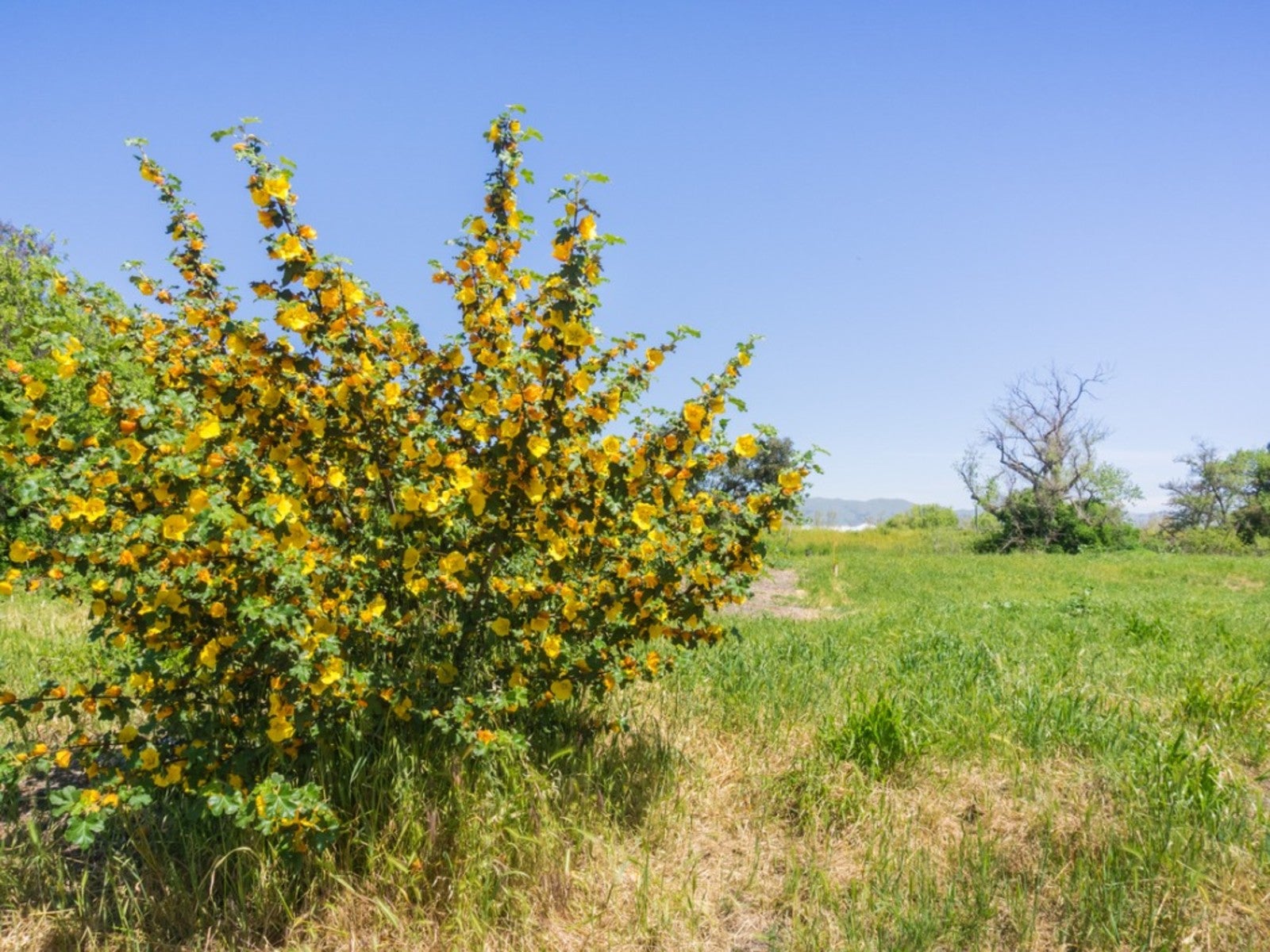Flannel Bush Care – How To Grow A Flannel Bush Plant


California flannel bush is a large shrub or small shrubby tree native to the state of California. It is hardy in USDA zones 8 through 10 but has some particular growing needs and quirky requirements. Make sure you have the right conditions and environment for growing flannel bush, and it will reward you with quick growth and beautiful spring flowers.
What is a Flannel Bush?
Flannel bush (Fremontodendron californicum) is a large shrub that can grow up to 20 feet (6 m.) tall and 12 feet (4 m.) wide. This growth comes within five years of planting, if you give it the best conditions. However, flannel bush is also short lived compared to other shrubs.
A flowering broadleaf evergreen, flannel bush produces large and sunny yellow blooms in the spring. The leaves give this plant its name and are fuzzy, like flannel. Just be careful when handling them. These soft looking leaves can actually irritate the skin and eyes. The little hairs can also stick in clothing, so avoid placing the shrubs in areas where people will be walking close to it.
How to Grow a Flannel Bush
Good flannel bush care begins with situating it in the right environment. Native to the foothills of California’s Central Valley and San Francisco Bay area, the native ecosystem for flannel bush is dry and warm, much like a Mediterranean climate. It also prefers growing in sandy soils and is very sensitive to excess moisture.
Grow flannel bush in a sunny spot with sandy soil. You can amend the soil in the area by adding sand. The soil does not need to be very fertile, but it must drain extremely well. Standing water can quickly kill the bush. One quirk of flannel bush is that any watering in the summer months can kill it. Yet it still needs access to water, so plant it about ten feet (3 m.) from a creek or other moist area of the landscape.
Pruning flannel bush is important if you want to keep it smaller in size. It will tolerate regular pruning throughout the year. Wear long gloves to avoid irritation from the leaves. While your shrub is still young and small you may need to stake it as the root system spreads wide but is shallow. A big wind can easily uproot young bushes.
Sign up for the Gardening Know How newsletter today and receive a free copy of our e-book "How to Grow Delicious Tomatoes".

Mary Ellen Ellis has been gardening for over 20 years. With degrees in Chemistry and Biology, Mary Ellen's specialties are flowers, native plants, and herbs.